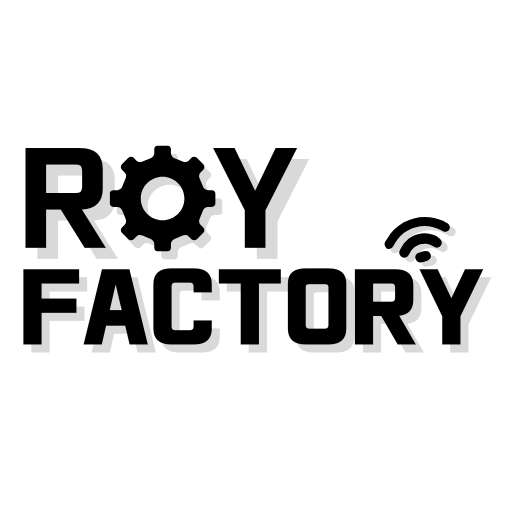Kubernetes Basic Concepts: The Foundations of Cloud-Native Infrastructure
- Kubernetes Basic Concepts: The Foundations of Cloud-Native Infrastructure
Kubernetes Basic Concepts: The Foundations of Cloud-Native Infrastructure
In the first post, we explored what Kubernetes is and why it’s such a big deal in the world of cloud-native development. Now, it’s time to understand the core building blocks that make up Kubernetes.
If terms like Pod, Node, Deployment, or Namespace sound confusing — don’t worry. This guide will explain each concept with simple analogies and real-world examples to help you grasp the basics with confidence.
1. What Is a Cluster?
A Kubernetes cluster is a group of machines (physical or virtual) that work together as a single system to run containerized applications.
Analogy
Cluster = Factory
Imagine a factory with multiple workers. The manager (Kubernetes) assigns tasks to workers (servers). The factory as a whole is your cluster.
Clusters have two types of nodes:
| Type | Description |
|---|---|
| Master Node | The brain of the system (control plane) |
| Worker Node | Executes your applications (Pods) |
2. What Is a Node?
A Node is a single machine in the Kubernetes cluster. It’s where your application code actually runs, inside containers within Pods.
Analogy
Node = Worker
Each worker in the factory does real work — building, assembling, delivering.
Each Node runs:
kubelet: Listens to commands and starts containerskube-proxy: Manages networking rules- A container runtime: Like Docker or containerd
3. What Is a Pod?
A Pod is the smallest deployable unit in Kubernetes. It wraps one or more containers and includes shared networking and storage.
Analogy
Pod = Lunchbox
A lunchbox can contain a main meal and a side dish. Similarly, a Pod may contain a web server and a logging sidecar container.
Key Features
- Pods share IP, port space, and volumes
- Pods are temporary — they can be replaced at any time
4. What Is a Deployment?
A Deployment tells Kubernetes how to run and manage a set of Pods. It handles things like versioning, rolling updates, and auto-healing.
Analogy
Deployment = Bulk order form
“Make 5 hamburgers and deliver them like this” — that’s your deployment spec.
Responsibilities
- Maintain desired number of Pods
- Roll out updates gradually
- Roll back automatically if needed
5. What Is a Service?
Because Pods come and go, their IP addresses constantly change. A Service provides a stable interface for communication between clients and Pods.
Analogy
Service = Call center number
No matter who answers, clients call the same number. Behind the scenes, the Service connects them to available agents (Pods).
Service Types
| Type | Description |
|---|---|
| ClusterIP | Internal access only |
| NodePort | Exposes a port on every node |
| LoadBalancer | Uses cloud provider load balancer |
| ExternalName | Redirects to an external DNS name |
6. What Is a Volume?
Containers are ephemeral — their data disappears when they’re restarted. Volumes provide persistent storage to solve this issue.
Analogy
Volume = External hard drive
Even if the Pod (lunchbox) changes, the data stays on the external disk.
Types include emptyDir, hostPath, and persistentVolumeClaim (PVC).
7. ConfigMap and Secret
Apps need settings — like database URLs or API keys. Kubernetes separates non-sensitive and sensitive data using:
- ConfigMap: For config values like environment variables
- Secret: For sensitive values like passwords or tokens
Analogy
ConfigMap = Handbook, Secret = Vault
Public instructions go in a manual, private data goes in a safe.
8. What Is a Namespace?
A Namespace lets you split resources inside the same cluster — useful for teams, environments, or services.
Analogy
Namespace = Office departments
HR, Accounting, and Engineering can share the same building (cluster) but work in isolated rooms (namespaces).
Examples: default, kube-system, dev, prod
9. The Core Control Components
Here are the brains behind the scenes:
- API Server: The entry point for all Kubernetes commands (
kubectl) - Scheduler: Assigns Pods to available Nodes
- Controller Manager: Watches resources and takes action
- etcd: Stores all cluster state (like a database)
- kubelet: Executes Pod specs on each Node
- kube-proxy: Handles networking
10. Lifecycle of a Kubernetes Deployment
Here’s how things work when you deploy an app:
- You write a YAML file describing your app
- You run
kubectl apply - The API Server receives the request
- Scheduler picks a Node
- kubelet starts the Pod
- Service exposes the Pod
Flow Diagram
YAML → kubectl → API Server → Scheduler → Node → kubelet → Pod → Service
11. Quick Recap Table
| Term | Meaning | Analogy |
|---|---|---|
| Cluster | Group of machines | Factory |
| Node | Worker machine | Employee |
| Pod | Smallest unit of deployment | Lunchbox |
| Deployment | Blueprint for Pod management | Order form |
| Service | Network interface for Pods | Call center number |
| Volume | Persistent storage | External hard drive |
| ConfigMap | Config values | Handbook |
| Secret | Sensitive config | Safe/Vault |
| Namespace | Logical partition | Department/Office room |
12. Wrapping Up
Kubernetes is powerful because it offers a unified, declarative way to run and manage containers. But to unlock its power, you need to understand its fundamental concepts.
In this post, we covered:
- What makes up a Kubernetes cluster
- What Pods, Deployments, and Services are
- How Kubernetes handles storage and configuration
- How teams can isolate environments using Namespaces
In the next post, we’ll explore the Kubernetes architecture — how the control plane, nodes, and components all work together.
Stay tuned.
